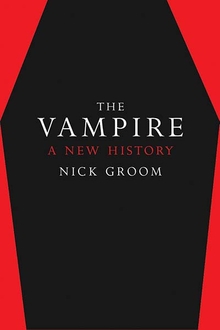Nick Groom—
William Harvey’s understanding united conventional classical models with new post-Paracelsian thinking, investigating blood through physical observation and examination, rather than by deferring to ancient authorities. Following Harvey’s groundbreaking work, in 1656 the architect Christopher Wren pioneered hypodermic injections by intoxicating his dog with wine injected straight into its veins. In 1665, Wren then suggested that Dr. Richard Lower attempt a blood transfusion on a dog. The scientist Robert Boyle wrote to Lower on the possibility that temperament and other characteristics could be transferred by blood, wondering ‘whether the blood of a mastiff, being frequently transferred into a bloodhound, or a spaniel, will not prejudice them in point of scent’. The diarist Samuel Pepys discussed blood transfusion between dogs in 1666, reflecting that there may well be benefits to humans: ‘As Dr. Croune says, [it] may, if it takes, be of mighty use to man’s health, for the mending of bad blood by borrowing from a better body.’ The Royal Society began to investigate human blood transfusion, and the next year Pepys reported on the remarkable case of Arthur Coga.
Coga, a 32-year-old Divinity graduate of Cambridge University, was ‘looked upon as a very freakish and extravagant man’. On 23 November 1667, he was treated to become more docile by receiving a blood transfusion from a lamb. Pepys observed that the medical fraternity ‘differ in the opinion they have of the effects of it: some think it may have a good effect upon him as a frantic man by cooling his blood, others that it will not have any effect at all’. Coga saw the lamb as emblematic of meekness and humility, declaring in Latin, ‘Sanguis ovis symbolicam quandam facul-tatem habet cum sanguine Christi, quia Christus est Agnus Dei’ (‘the blood of sheep has symbolic power like the blood of Christ, for Christ is the Lamb of God’). The lamb’s blood was transfused using quills and silver pipes. Coga received a payment of 20 shillings, drank Canary wine and smoked a pipe in celebration, and the operation was repeated on 12 December. Coga’s mood was not noticeably softened by the treatment; however, some change had apparently taken place. He wrote a begging letter to the Royal Society, complaining that he had been transformed into ‘another species’ and was reduced to pawning his clothes – or, as he bombastically (and in the third person) put it, he ‘dearly purchases your sheep’s blood with the loss of his own wool in this sheep-wrackt vessel of his, like that of Argos, he addresses himself to you for the Golden Fleece’. He signed himself ‘Agnus Coga’ – ‘Coga the Sheep’.
Coga was more fortunate than he perhaps appreciated. A few months earlier, in France, Jean-Baptiste Denys had performed cross-species transfusions into two human patients. Both subjects died and Denys was accused of murder, although he was later acquitted. In January 1668, another patient (who again required a calming of the spirit) died from a similar transfusion, and by 1678 the Pope had prohibited such animal-to-human treatments. Attempts were made to continue this line of experimentation in Britain regardless – on inmates of the Bedlam lunatic asylum. These were prevented by the hospital’s surgeon, who had a ‘scruple’ against vivisecting mad people. And so this line of research was halted until, in 1818, James Blundell published his accounts of experimental transfusions given to dogs.
Blood oozed through eighteenth-century thought. In the period between the scientific experiments performed on Coga the Sheep and Blundell’s dogs, blood was simultaneously part of everyday life, a mysterious substance of folklore and superstition, and lay at the heart of the Christian mass and the symbolism of the Church. It was both natural and supernatural, and this abundance of meaning was encapsulated in the figure of the vampire. The vampire embodied the contradictions of blood: it obscured distinctions between the living and the dead, the human and the non-human, even between psychological stability and physical metamorphosis.
From The Vampire by Nick Groom. Originally published by Yale University Press in 2020. Reproduced with permission.
Nick Groom, known as the “Prof of Goth,” is professor of English at Exeter University, UK. His previous titles include The Gothic: A Very Short Introduction, and The Seasons: A Celebration of the English Year, which was shortlisted for the Katharine Briggs Folklore Award and came runner-up for BBC Countryfile Book of the Year.
Further Reading:



 Deobandism, Islam and the Religious Narratives of the Taliban
Deobandism, Islam and the Religious Narratives of the Taliban